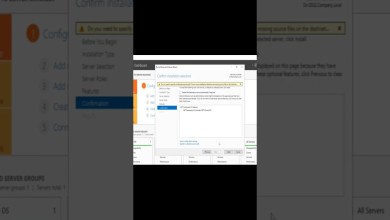Windows can't be installed on Drive Partition Error Solution
#laptop #laptops #hplaptop #hp8460p
how to solve issue of windows can’t be installed on drive partition in any model of laptop or pc.
If you’re encountering issues while trying to install Windows on an HP laptop model 8460p or any model of your laptop e.g HP, Dell, Lenovo, Compac, Sony Vio, apple, IBM, sony, there are several potential solutions you can try. The error message you’re receiving would help in narrowing down the exact issue, but here are some general steps you can take:
Ensure that the Windows installation media (USB or DVD) you’re using is not corrupted. You can try creating a new installation media using the official Windows Media Creation Tool.
Make sure that your laptop is set to boot from the correct installation media. You may need to access the BIOS/UEFI settings by pressing a specific key (often F2, F10, F12, ESC, or DEL) during boot and then adjusting the boot order to prioritize the installation media.
Format the Drive:
Before attempting to install Windows, it’s a good idea to format the drive where you want to install the operating system. During the installation process, you’ll be given the option to format and partition the drive. Choose the appropriate options as needed.
Secure Boot and UEFI and Legacy Setting:
Some laptops use UEFI firmware and may have Secure Boot enabled. Check the BIOS/UEFI and Legacy settings and disable Secure Boot if it’s causing issues with the installation.
Compatibility Mode:
If you’re installing an older version of Windows (like Windows 7) on newer hardware, you might need to enable compatibility mode in the BIOS/UEFI and legacy settings.
Drivers:
Sometimes, missing or incompatible drivers can cause installation issues. Check if HP provides specific drivers for Windows installation on their support website. You might need to load certain drivers during the installation process.
Check for Hardware Issues:
It’s possible that there might be a hardware issue affecting the installation process. Check for any loose connections or faulty hardware components, especially the hard drive or SSD where you’re trying to install Windows.
BIOS/UEFI Update:
Make sure that your laptop’s BIOS/UEFI and legacy firmware is up to date. Sometimes, updating the firmware can resolve compatibility issues.
Try a Different Installation Media:
If you’re using a USB drive, try using a different USB port or a different USB drive altogether. Sometimes, issues can be related to specific USB ports or drives.
Test with Different Windows Version:
If you’re having trouble with a specific version of Windows, you could try installing a different version to see if the issue persists.
[ad_2]
source



